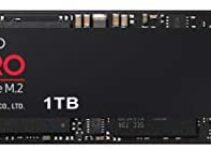Jack Cresswell keeps a close eye on the feral pigs on his property from his living room.
Key points:
Drones can be used for anything from seed dispersal in rough terrain to spot spraying chemicals
The technology has improved exponentially in the last three years
Critics say the technology is overrated and needs extensive training to be used by the average farmer
He farms dorpers near Dubbo and using his drone to monitor the pests saves him anywhere from weeks to months in being able to trap or bait effectively.
It also saves time and fuel as he doesn’t have to make the rounds on a motorbike to find them — something that’s particularly useful with sky-high fuel prices.
He simply sends the drone out over the property to look for the feral pigs and monitors the footage live.
“Lambing is so crucial at the moment, and during a drought, and with monitoring the pigs, we can see exactly where they are and base our baiting program off that,” Mr Cresswell said.
“That helps us set the traps much better.”
Mr Cresswell has also seen a reduction in labour costs because he’ was able to monitor water and tank levels much quicker.
“That would save four hours of labour, you can do that in half an hour with the drone. That saves a minimum of four hours a week or about $200 for the day.”
Pressures like extreme weather and skyrocketing input costs are pushing more farmers to adopt new ways of working.
Increasing efficiency a priority for farmers
At the Big Tech Big Ideas Field Day and Conference in western New South Wales, growers and producers were interested in how they could use the new tech on their properties to increase efficiency.
Tristan Steventon, who runs agriculture drone company StevTech in Parkes, said his drones could detect issues on farm like pests or weeds.
“We scan a paddock with our drone, find and detect particular species of weeds and push that push that data into an AI or machine learning software,” Mr Steventon said.
“We can turn then that data into a file to go into a spray drone to get to the root of the problem.
Space to play or pause, M to mute, left and right arrows to seek, up and down arrows for volume.
The technology can detect weeds in a green-on-brown or green-on-green situation and has saved farmers up to 90 per cent of their chemical costs in a single paddock.
The demand for drones from farmers has gone up dramatically, with around half of the farmers Mr Cresswell sees now using drones.
He has been using drones on farm for about a decade now.
The technology has improved exponentially over the last two or three years, based on the number of filters and software that are now available to use with the drones.
University of Sydney Professor Guy Roth, however, said the benefits of drones in agriculture had been overstated.
“Drones are fantastic for taking images and there are some great applications like the spray drones. “It’s just that it’s not as easy as it looks,” Dr Roth said.
The technology also will not function properly in areas with low connectivity.
But there may be a way to bridge at least the knowledge gap.
Ben Watts, a drone operator admitted there was quite a lot to learn before people could use a drone on-farm.
However, he said he had found that with training and practice, many farmers had been able to incorporate the technology into their daily operations relatively quickly.
The NSW government offers some free drone training courses for farmers under its AgSkilled 2.0 program, which could help them operate the technology better as it goes mainstream.

